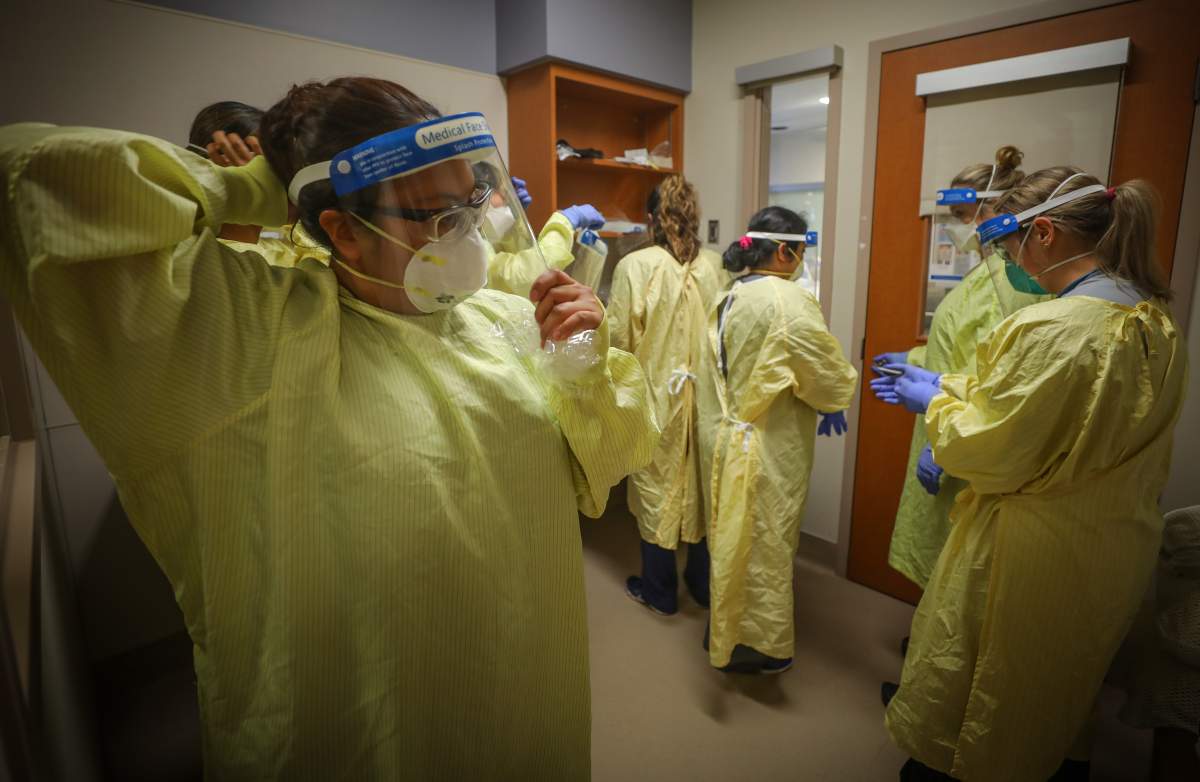After several weeks of consistently increasing COVID-19 infections in Alberta, new daily case numbers have started to plateau in recent days, but that doesn’t mean we’re out of the woods yet when it comes to the second wave of the pandemic.

Since late November, the province broke record after record when it came to daily case counts, but since confirming 1,887 new infections on Dec. 14, the trend has turned downward slightly with numbers as low as 1,270 later this week, though that doesn’t mean Alberta is bending the curve.
Dr. Stephanie Smith said it’s “a bit too soon” to know if the dips are a result of new, strict health measures.
“Given the amount of community transmission that we’ve seen in the province — but especially in Edmonton and to a degree in Calgary — I think it is going to take a bit more time before we would really see the impact of those restrictions more on a sustained basis,” the associate professor in the University of Alberta’s faculty of medicine said.

Smith said while it’s encouraging to see cases dipped over a 48-hour period, the increase back up to 1,571 new infections on Thursday shows Albertans shouldn’t rely on a brief decline as evidence the situation as a whole is improving.

Get weekly health news
“Hopefully people are adhering to the restrictions. And I think that we’re all hopeful that those will actually result in a decrease in community spread and therefore decreasing hospital admissions, et cetera,” she said. “But it is a bit early to say.
“We really do need to kind of push on with the messaging that we all really need to do our part in terms of trying to stay home and not socialize.”
Chief medical officer of health Dr. Deena Hinshaw said on Monday that while cases and the province’s R-value — or rate of transmission — appeared to be plateauing over the week, it’s “not enough” to show a trend.
“We also need to look at our new daily case numbers, which remain high. What we need to achieve together is several weeks of an R value well below one, with a corresponding decrease in new case numbers,” Hinshaw said.
“At present, even with this single-week plateau, we are continuing to see growing hospitalizations and ICU admissions, which are straining our health system.”
Case numbers are rising at an alarming rate in Ontario this week, after roughly a week of declining infections, and Dr. Craig Jenne, infectious disease expert with the University of Calgary, said that’s “something we definitely have to guard against here in Alberta.”
“The people being admitted to the hospital are the people that are already showing up in the daily infection numbers. So the hospitalizations tend to follow behind identification of infection by two or three weeks,” he said.
“We can expect hospitalizations and intensive care unit admissions to continue to go up for the next several weeks in Alberta, even if the daily numbers begin to plateau.”
He said the Christmas holiday season is “probably the biggest challenge we’re going to face” when it comes to curbing viral transmission.
“We have seen, without exception, following long weekends, following holidays with family gatherings — be it Labour Day, Thanksgiving — we have seen dramatic spikes in COVID numbers,” Jenne said.
“Despite the fact there are restrictions, people will likely still be gathering with family and friends over the holidays. These are the environments the virus will use to spread and then following Christmas, we will, unfortunately, expect to see an uptick in viral numbers again. The question is how big and how long that will last.”

Dr. Noel Gibney, who works in the department of critical care medicine at the University of Alberta, said it’s likely we’ll see a surge in cases linked to Christmas gatherings early in the New Year.
“The situation in Alberta is extremely serious,” Gibney said.
“I sincerely hope that those case numbers that have been coming down will continue to come down but, people being people, this being the Christmas holidays, I really worry that what we’re looking at is the start of a superspreading event that will become apparent in the New Year, first week of January.”







Comments